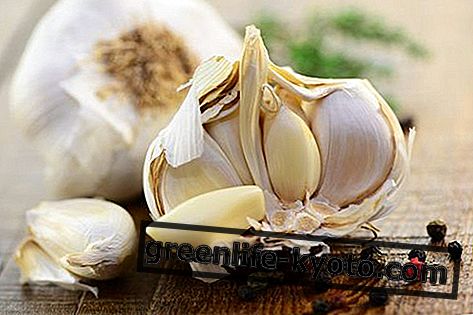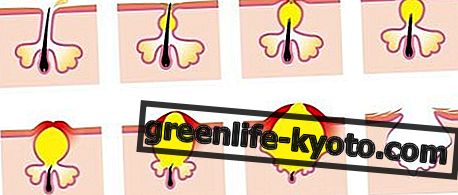
Many "official" doctors claim that the treatments that we will call complementary serve in the case in which there is not a real pathology; in summary, we resort to it when one is well after all, at most it must "reduce stress". What do you think?
The complementary interventions are directed to the person, whether he is healthy, whether he is the bearer of a pathology, and intend to broaden the objectives of health and well-being in order to improve the quality of life of the individual himself. In fact they have very specific characteristics: in addition to promoting healthy lifestyles, they recognize the specificity of the individual understood in its integrity, and identify aspects of its multidimensionality that otherwise could be overlooked and denied.
I therefore think that in a perspective of "health protection", promotion or "restoration of the state of well-being" the debate between opponents and supporters of these disciplines is increasingly dissolving and the different systems of care are increasingly learning today to integrate and coexist.
This integration of knowledge, with a view to patient-centered medicine, has now become of fundamental importance in the therapeutic process. The result that we "together" would like to pursue is greater and significant patient satisfaction, treatment improvements and better adaptation to the disease. The complementary interventions, in this sense, can therefore be an added value to be proposed to the person, a further resource for the patient, as he expands his sense of trust and hope towards recovery, since he, thanks to this integration and to the positive effects obtained, he finds the best conditions to be able to react to the various levels of anxiety, fear and depression, rather than in distress ... he finds, in short, the courage and strength to fight .
The result is a new role for the patient, that is, as co-manager of his own illness, actively engaged in restoring his health: a role that must be understood and supported ... How to stem or change this belief slowly?
Today it is becoming increasingly common to observe professionals who in the past had expressed disagreement with complementary practices, resorting to methods that change lifestyles, reduce stress, promote physical exercises and other techniques that affect psycho-physical balance and that in any case have a positive impact on the patient's therapeutic compliance.
I am therefore convinced that a connection is possible between conventional treatments and these methods, which address physical, mental and spiritual reality and therefore healing. These interventions can therefore be an integral part of any treatment plan (preventive, curative, educational-educational, etc.) and therefore must be encouraged by the carers. This integration in care can only find greater appreciation in chronic diseases, in serious ones in particular, or as is obvious, in the states of terminality. It is essential, however, that in health resorts, carers broaden their health ideas, take on an effective supportive attitude and aiding in the opening of the emotions of their clients, towards feelings of anger, helplessness, anguish and abandonment., which very often with the disease, have the upper hand. It is essential for this to consider the person in his overall, global dimension, always having an "overview" of needs and discomforts, taking into account the subjectivity, experiences and cultural roots of the individual. The human-patient being who experiences the disease is also existence, presence, emotions, feelings ... it is also truth: one's own truth!
It is therefore necessary to update the knowledge on the use of complementary interventions, to ask ourselves why there is a growing recourse to the use by subjects suffering from pathologies, to make multi-professional reflections on health improvement programs ...

Complementary interventions are not intended to replace treatments or advice from professionals, but to play a role alongside conventional treatments, helping to improve the patient's quality of life and helping him to better manage symptoms.
In essence, we need a new culture, a revolutionary culture of health, which is already partly happening in the field of medicine and which is already a reality in many treatment contexts.
I believe that this new reality is real change ... today it is a new collective consciousness, a change that is growing and that I believe is now unstoppable. Probably a need for citizens that has been hidden for too long ...!
In your text did you discuss the benefits of qi gong and the movement in general (external and internal) in the oncology field?
Yes, certainly ... several years ago in Milan I met a group of young patients in care at a well-known cancer center who went to Switzerland every week to practice this discipline ... It made me think a long time, I was curious to find out what they felt from this form of gymnastics ... Then, subsequently, practicing together with them this activity of light intensity, and in a constant way, understood by their stories and by what I observed that the constant practice of these movements brought them numerous benefits, in particular allowed them to recover energy and improve some symptoms, including physical and mental fatigue, anxiety level and quality of sleep.
Qi gong therefore has very ancient origins and is based on traditional Chinese medicine . Today many testimonies document its therapeutic purposes, aimed at strengthening the body, mind-body harmonization and the individual's relationship with the external environment. Whoever practices this discipline learns first of all to use his own breathing and to activate, and therefore to consciously direct his energy both in internal and external movements, through a series of specific exercises of concentration and mental and muscular deconcentration. It follows therefore, if these exercises are performed with constancy, a condition of relaxation, tranquility, inner peace, quietness, postural stability, vital energy ...
It is clear that these effects (relaxation, quiet, breathing and movement) have a positive influence on many aspects and, at the same time, they improve the general state of the person, contributing to the recovery of health and the regulation of many functions. In the field of oncology, in particular, where several studies have been carried out, Qi gong finds particular application and advantages, as an integral part of support, recovery and functional rehabilitation programs. All physical activities, finally, of moderate intensity, moderate and constant can therefore be considered as potential additional resources for those who are experiencing their own disease situation, and generate greater capacities and positive aspects.
In your opinion, what is the country in Europe where integration in the medical field has really achieved important goals?
I am thinking of Germany, in particular, where the spread of complementary care has reached a strong increase among the population, thanks to the freedom of care ... and where various operators exercise with a legal status recognized and equal to the other health professions. But also other countries like Great Britain, France, Denmark, Belgium and Switzerland have always shown a remarkable openness towards healthy disciplines, in the area of health education, maintenance, assistance and well-being individual. These countries have for years launched measures that sanction the recognition of the various holistic operators in the sector, thus affirming the freedom of choice of the European citizen, in full respect of his fundamental right in terms of health.
Finally, these choices, which are increasingly being strengthened and integrated in the field of health, find full satisfaction with the principles dictated several years ago by the WHO, according to which “ health is not only the absence of disease, but a state of complete physical, mental and social well-being of the individual ... "
How is Italy positioned?
In Italy this "new" philosophy of health is increasingly becoming, finding the right place and integration with traditional care. In some regions such as Lombardy, Piedmont, Tuscany, Liguria and Emilia Romagna, just to give a few examples, there are programs and experiences that testify to the application of integrated interventions, especially in the field of oncology. Also in our country there is therefore an increase in the use of complementary care ... Suffice it to say that there are now more than nine million Italians who resort to unconventional care practices and as is the case for other European countries, those who use them they are essentially middle-aged, female educated people, aware of their choices and advantages ...
However, I would say that in our country, unlike the European ones, the CAMs have not yet been able to express their potential . Indeed, there is still a legislative vacuum and certain resistance to the Operators who practice these disciplines, which should be filled instead.
I would say that in Italy it would be desirable, first of all, to render "equal dignity" to Italian operators compared to European ones, but not only. It would be necessary to widen the horizons of health more and more, to combine knowledge, redesign the care pathways, create integrated operational approaches that look at illness and suffering, and that safeguard the person: the person and the quality of life must become the essential project of who cares ...!
Tantovincoio.it is the site of a thirty-year-old girl, Federica, who has made her medical records available, the exams following various interventions due to the diagnosis of peritoneal carcinoma. The opening on the web world expresses his search for new therapeutic possibilities. What do you think?
I visited Tantovincoio.com, Federica's site, and I believe that his is a very strong message ... I think a reflection is necessary. First of all, we must ask ourselves what are the motivations that push patients to go on the Web. We must understand what the deep desire that drives them to do this is. We must therefore reflect on what is really therapeutic for the patient "in addition to the cure" ... I would say that it is clear that we are faced with a strong need for information and communication. I think that the language that is used today by health professionals is too "medical", that little time is devoted to communication and that information is very often incomplete and unclear ... Instead, the patient considers the relationship a "therapeutic act" like the technical skills and treatments offered. Missing dunquecosa in the current courses of care, the completeness of information is missing, the integration of knowledge, the value of the word, a space is lacking to express the emotions, the support and the continuous encouragement.
Sometimes the web becomes almost exclusively the only tool with which you can concretely communicate the discomfort that you are experiencing on your skin, the tool where it is allowed to manifest your suffering, to ask for help.
The Web thus becomes a space to receive attention, the place where it is possible to talk about oneself, confront oneself, receive answers to one's questions, find comfort. This space also allows patients to discover that other people are experiencing situations similar to ours and share the same problem, so they pursue the same goals together, participate through an active role, rediscover resources for themselves and for others. I would say that recognizing oneself in the problem, with common goals, allows patients to mutually support each other, to propose different views of the same problem and often it therefore represents a big help for overcoming an inconvenience.
In this sense, the contribution that the web can make to the patients seems particularly valid, and since today more and more patients are turning to this tool to represent their needs with ever greater incisiveness, or as a source of biomedical information, it would be appropriate for professionals to of health paid particular attention to the dialogue with their patients, with family members and with the Web.
A new actor, the web, with which in the near future it will be necessary to integrate, in order to research and propose shared solutions that address the person in care, in its entirety.













